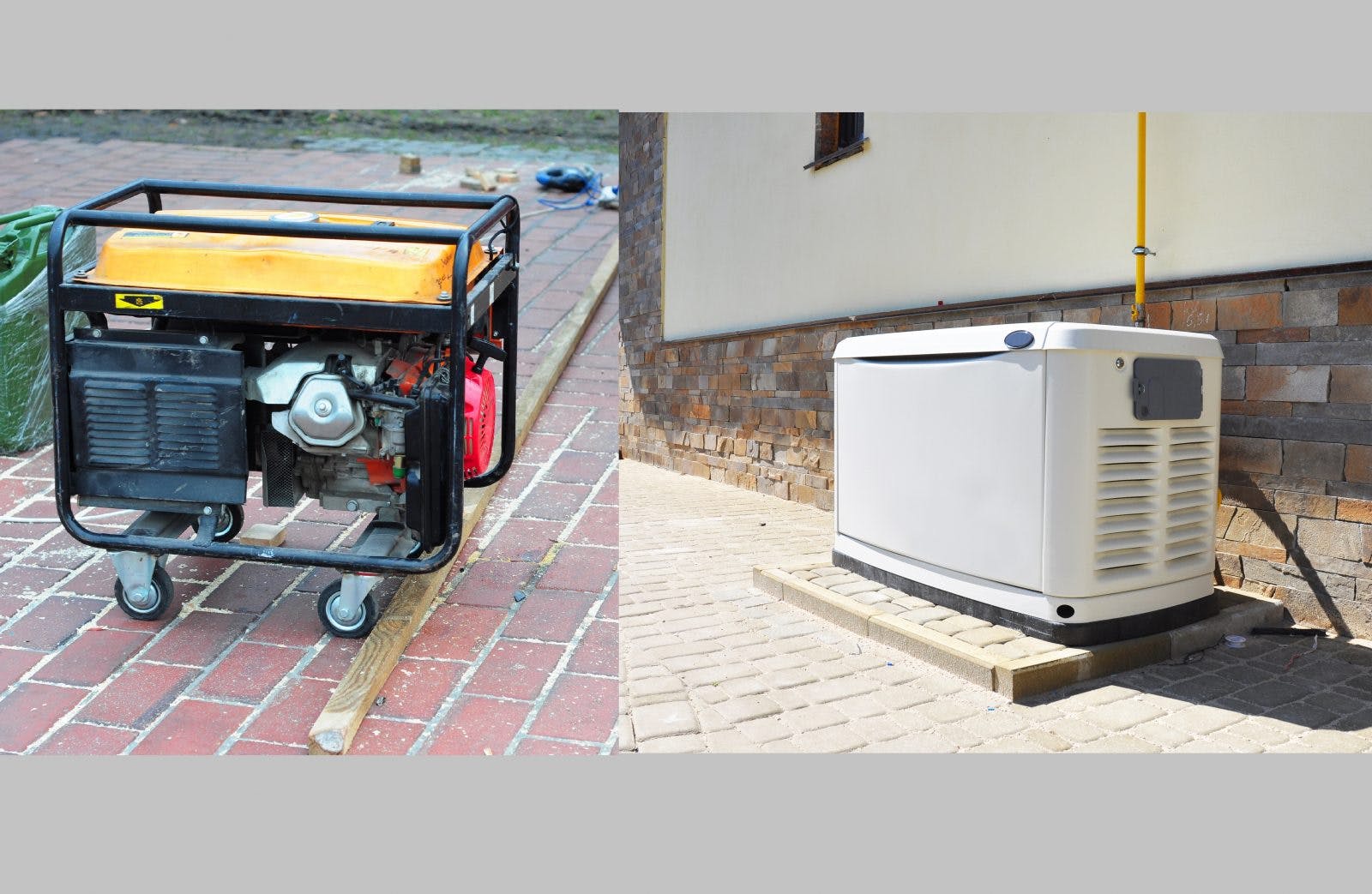One of the most popular additions to a home is not made of wood and nails. It’s an electrical appliance that powers electrical appliances and more.
Home generators are becoming a must-have item for many residents to ensure the lights stay on in all situations. Think about that time when the power went out in a storm or in the middle of a heat wave. And what happens when an earthquake hits, potentially cutting off thousands of households from steady, reliable electricity?
There are two types of generators. A standby generator (in photo, right) is connected to the utility grid with a switch that typically kicks on in a few seconds when power is cut. A portable generator, meantime, has built-in outlets to directly connect an extension cord or to a home via a transfer switch; one can cost from $500 to $1200.
Standbys are metal, industrial-looking boxes usually bolted to a concrete pad outside the home and big enough to power an entire home. They can run effectively for weeks assuming there is a steady supply of gas and users follow operational instructions.
Portables offer an inexpensive option that can power essential items and have a lifespan of about 1500 hours of operation. They use about three-quarters of a gallon of gasoline or roughly 3.5 gallons of propane per hour and should only operate about 12 hours straight before needing a break to check oil levels and avoid overheating. They can also operate via a natural gas connection and cost about $48 for 12 hours (based on an estimated cost of $13 per thousand cubic feet of natural gas; prices vary by season and region).
How popular are the power back-ups? Spending on generators rose 36% between 2016 and 2019, to some $6B a year, The Wall Street Journal reported. One producer of standby (or whole-home) generators said sales in the first half of 2021 nearly doubled compared to the same period in 2020.
Standbys deliver an output of between 8,000 and 20,000 watts, with a typical 2500 sq. ft. home needing about 18,000 watts to fully power the house for weeks. They can run about 1000 hours (roughly 6 weeks) straight before risking breakdown and have a lifespan of approximately 15,000 hours. The price tag can be heavy – in the $2000-$6000 range plus roughly $2000 for installation by a licensed electrician. The closer the generator is to electrical and gas lines, the cheaper the installation. (But what’s the price of steady power to keep the lights on and perishables fresh?)
When using a portable, be sure all items in the home are powered off before starting the generator. Then, one by one, turn on the few items required to survive the emergency – usually a fridge, freezer, some lights and an outlet for a radio or fan if in a heat wave. Portables are not built to run items that can strain any electrical panel, such as central air conditioners, TVs, microwaves and washer/dryers.
Many generator companies offer handy calculators to help determine the size of a standby model based on whether you wish to power the whole home or only critical items. Electricians can wire a generator to work on specific items you deem priorities, including medically necessary devices in the home or internet service.
In late 2020, Consumer Reports recommended the Champion standby generator for both smaller homes (model 100174, $2350) and larger homes (model 100179, $3000). The magazine’s editors gave top marks to the Dewalt (PMC188000, $1050) in the portable generator category.
Some words of warning:
- It’s not your imagination: We are seeing more power outages than before. From the early 2000s to 2020, the number of significant “electrical disturbance events,” as tracked by the Department of Energy, increased by nearly 1200%. Think about whether you can live without electricity for days or possibly weeks.
- The Centers for Disease Control and Prevention estimates more than 400 people die annually from accidental, carbon-monoxide poisoning associated with products such as faulty generators. Place the generator at least 10 feet from the home with the exhaust pointing away from the structure.
- Do not run a portable generator inside the home. If rain or flooding are concerns, be sure the portable is protected by a ventilated area like a canopy on a dry surface. Keep children and pets away from the equipment.
- Shut off the generator and let it cool before adding more fuel or risk sparking a fire.
- Read the manufacturer’s operations manual before using any machinery.




